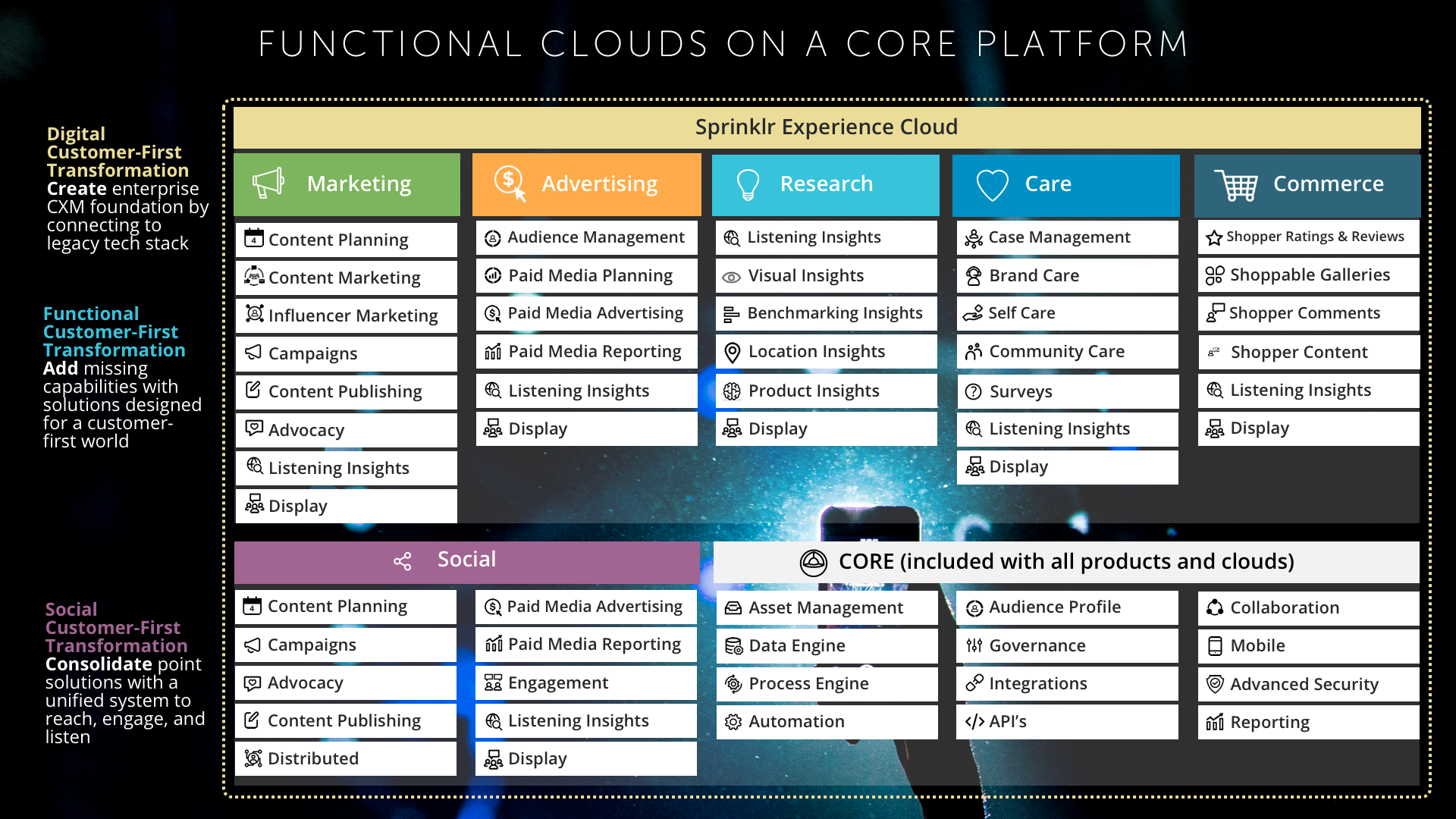Sprinklr, the former social platform, emerges this week as a customer experience cloud
The company is launching an expanded version of its Experience Cloud, oriented around social but encompassing multiple channels.
Sprinklr had “a coming-out party” this week.
That’s the characterization by founder and CEO Ragy Thomas. He told me that the company, known for its social media management platform, is announcing this week at its Digital Transformation Summit in Nashville its emergence as a customer experience management platform.
Not to toot my own horn more than is allowed by law, but a week ago I basically predicted this kind of emergence.
I pointed to the recent buying spree by social media management platform Hootsuite — preceded by Sprinklr’s bigger one from 2014 to 2016 — and ventured that these shopping trips might just be a warmup for an evolution of social media management platforms into “the next big generation of relationship platforms.”
This would be, I wrote, similar to how email tools later evolved into marketing automation clouds.
Thomas told me that this predicted evolution was “spot on,” except that there’s a new model going beyond marketing automation.
That emergence is represented by a variety of newly-announced additions to Sprinklr’s Experience Cloud. Originally announced in 2015 as a way to manage interactions over 23 social channels and websites, the Cloud is now expanding into a variety of channels oriented around social media, either through on-board capabilities or integrations with outside tools.
In particular, there are now new solutions in five areas — Marketing, Advertising, Research, Care and Commerce — containing both new and expanded functions, in addition to social:
- In the new Marketing area, marketers can now see visualizations of social and business data, and there are tools to turn loyal customers and employees into advocates. Existing content marketing and influencer marketing capabilities have been expanded.
- The Advertising component offers a new Audience Management capability that can combine identified first-party data with third-party data and can generate segments, plus there’s a new Paid Media Ads management and reporting and an expanded Paid Media Planning.
- The Research section offers the new ability to compare social performance across brands and channels, plus updates to tools for following customers’ location habits, the use of brand images across social and customers’ feelings about your brand.
- In the [Customer] Care area, there’s a new Case Management and issue routing tool that can be integrated with an existing contact center.
- And a Commerce section updates the ability to capture and leverage reviews or comments and curate user-generated content.
Customer experience is poised to replace marketing automation or similar labels as the key description of what brands do when they interact with customers. Last month, for instance, Adobe launched a new Experience Cloud, a kind of uber-cloud that included its existing platforms and added new ones for advertising and analytics.
Last summer, Salesforce’s Marketing Cloud director of product marketing told me that her company’s clouds were all “about a connected experience, a seamless customer experience.”
Thomas sees his company as now a full member in this category of major customer experience management platforms, along with Adobe, Salesforce, Oracle, SAP, IBM and Microsoft. But Sprinklr isn’t necessarily competing directly, he said, adding that his company can “complement” the other category members, as it is doing through partnerships with Microsoft, SAP and IBM.
He acknowledged that the newly-emerged Sprinklr doesn’t have native tools for every need — such as email marketing or website management. But Thomas said these were part of the “old model,” and his company’s Experience Cloud can integrate with third-party providers as required.
On the other hand, Thomas pointed to several key strengths his Experience Cloud is bringing to its coming-out party: orientation around a major social platform, re-coding of all acquired companies so they become completely native, and directly providing non-phone customer care.
Marketing Land – Internet Marketing News, Strategies & Tips
(51)





